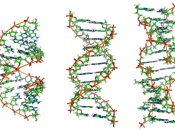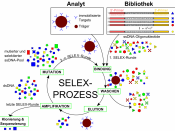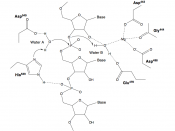BIOCHEMISTRY In the scientific journal article "DNA Aptamers Selected against the HIV-1 RNase H Display in Antiviral Activity"ÃÂ from the Biochemistry journal the researchers were talking about an inhibitor of the ribonuclease H activity on RNA-DNA hybrids. Since they know that a vaccination against HIV-1 is still a long-term goal. They want to make an inhibitor that will be more affective at blocking the viral replication and thus slow the onset and progression of the HIV-1 virus. The article states that new inhibitors have been found using the SELEX method that means systematic evolution of ligands by exponential enrichment. In the article the scientists used SELEX to isolate ligands that inhibit ribonuclease H activity associated with the HIV-1 RT. With SELEX scientists have been able to isolate oligonucleotide sequences, which are emerging as a class of molecules that fight antibodies. Many of the oligonucleotides selectively inhibit the DNA polymerase actively.
Most of the compounds inhibiting the HIV-1 work by inhibiting the DNA polymerase function on the RT. Some of these compounds are AZT, ddI, ddC, and nevirapine.
In the experiment that they carried out they found that the molecules that they chose in this experiment do not share features with the DNA aptamers previously isolated against the HIV-1 RT. The aptamers were predicted to form pseudoknots, but they did not. The selected DNA ligands shared little or no structural similarity with RNA aptamers. But this is expected since the RNA chains of the same sequence do not usually adopt the geometry adopted by the DNA. In conclusion the results of the scientists that carried out the experiment showed that the oligonucleotides used were powerful inhibitors of the HIV-1 virus.





